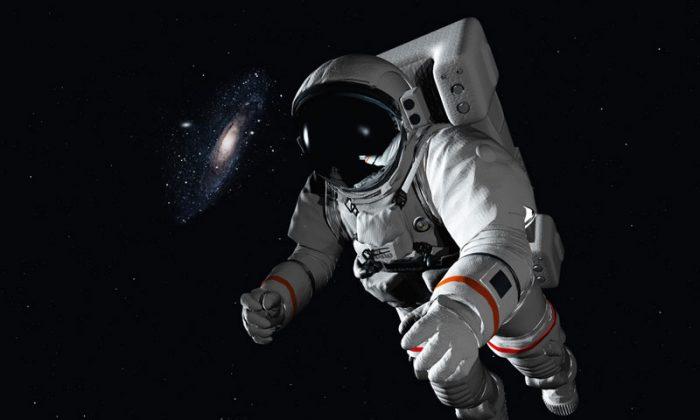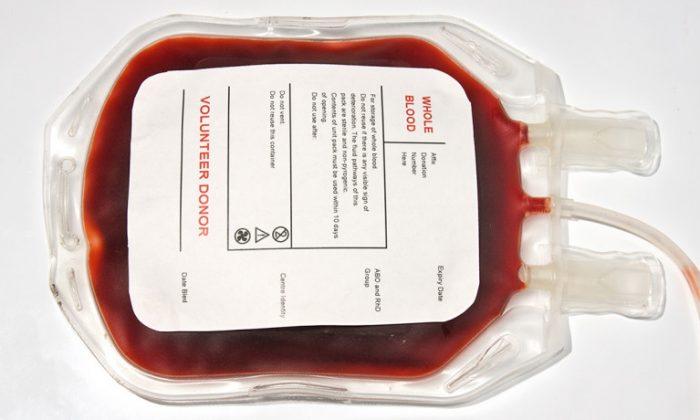Some rats exposed to the radiation astronauts would face on long deep-space missions develop lapses in attention and slowed reaction times, even when the exposure is extremely low, researchers say.
The cognitive impairments—found in many, but far from all, of the test animals—appear to be linked to protein changes in the brains of the rats that were affected, the scientists say.
If that is also true in humans, it may be possible to identify a biological marker that predicts sensitivity to radiation’s effects before a vulnerable astronaut is sent to deep space.
When astronauts are outside Earth’s magnetic field, spaceships provide only limited shielding from radiation exposure, says study leader Robert D. Hienz, associate professor of behavioral biology at Johns Hopkins University School of Medicine.
If they take space walks or work outside their vehicles, they will be exposed to the full effects of radiation from solar flares and intergalactic cosmic rays, he says. Since neither the moon nor Mars has a planet-wide magnetic field, astronauts landing on them would be exposed to relatively high radiation levels.
But not everyone will be affected the same way, the Hienz experiments suggest.
“In our radiated rats, we found that 40 to 45 percent had these attention-related deficits, while the rest were seemingly unaffected,” he says. “If the same proves true in humans and we can identify those more susceptible to radiation’s effects before they are harmfully exposed, we may be able to mitigate the damage.”
If a biomarker for radiation susceptibility can be identified for humans, it could have implications beyond space travel. It might, for example, help doctors determine the best course of treatment for patients for brain tumors or identify which patients may be more at risk from other radiation treatments.
Previous research tested how well radiation-exposed rats do with basic learning tasks and mazes. The new study, published in Radiation Research, focuses on tests that closely mimic the fitness-for-duty self-tests used by astronauts on the International Space Station prior to mission-critical events such as space walks. Similar tests are also used for soldiers, airline pilots, and long-haul truckers.
Radiation Sensitivity
In one test, an astronaut sees a blank screen on a handheld device and taps the screen when an LED counter lights up. A normal reaction time is less than 300 milliseconds. The rats in the experiment were similarly taught to touch a light-up key with their noses and then tested to see how quickly they reacted.
The rats were first trained for the tests and then taken to Brookhaven National Laboratory in Upton, New York, where a collider produces high-energy proton and heavy ion radiation particles normally found in space. Some rats’ heads were exposed to varying levels of radiation that astronauts would normally receive during long-duration missions, while other rats were given sham exposures.
Once the rats returned to Johns Hopkins, they were tested every day for 250 days. The radiation-sensitive animals (19 of 46) all showed evidence of impairment that began at 50 to 60 days after exposure and continued through the end of the study.
Lapses in attention occurred in 64 percent of the sensitive animals, elevations in impulsive responding occurred in 45 percent and slower reaction times in 27 percent. The impairments were not dependent on radiation dose. Some of the rats didn’t recover at all from their deficits, while others showed some recovery over time.
Spacewalk Precautions
The dopamine transport system appears impaired in the brains of the radiation-sensitive rats, says Catherine M. Davis, a postdoctoral fellow in psychiatry and behavioral sciences and the study’s first author. Most likely the neurotransmitter, which plays a role in vigilance and attention, is not removed as it should be for the brain to function properly, she says.
Humans with genetic differences related to dopamine transport, she adds, have been shown to do worse on the type of mental fitness tests given to the astronauts and rats alike.
Davis says she wouldn’t want to see radiation-sensitive astronauts kept from future missions to the moon or Mars, but she would want those astronauts to be prepared to take special precautions to protect their brains, such as wearing extra shielding or not performing space walks.
“As with other areas of personalized medicine, we would seek to create individual treatment and prevention plans for astronauts we believe would be more susceptible to cognitive deficits from radiation exposure,” she says.
Astronauts today are not as exposed to the damaging effects of radiation, Davis says, because the International Space Station flies in an orbit low enough that Earth’s magnetic field provides protection. But NASA, working from goals outlined in the US National Space Policy, is developing plans to send humans to an asteroid by 2025 and to Mars in the 2030s.
Other researchers from Johns Hopkins and American University contributed to the research. While their team studies the effects of radiation on the brain in deep space, other NASA-funded research groups are looking at the potential effects on other parts of the body and on cancer risks.
NASA’s National Space Biomedical Research Institute funded the research.
Source: Johns Hopkins University. Republished from Futurity.org under Creative Commons License 3.0.
*Image of “astronaut“ via Shutterstock




Friends Read Free